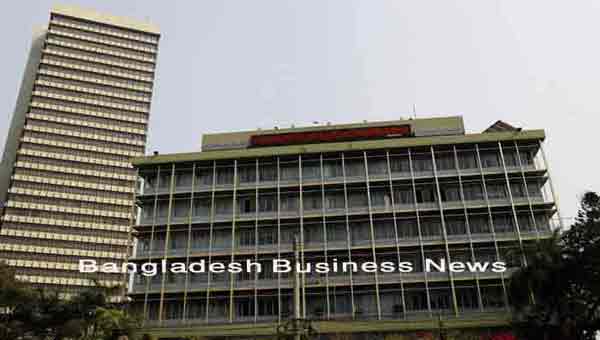

Bangladesh Bank Headquarters
Dhaka, Bangladesh (BBN) - The central bank of Bangladesh is set to unveil its second-half (H2) yearly monetary policy on Monday to achieve maximum economic growth through ensuring the quality of credits, officials said.
Bangladesh Bank (BB) Governor Fazle Kabir will announce the monetary policy statement (MPS) at 2:30 pm on the day for the January-June period of the fiscal year (FY) 2017-18 to help real sectors for achieving sustainable growth with curbing inflationary pressures on the economy.
“We’re formulating the MPS giving top priority to facilitate investment through increasing credit flow particularly in the real economic sectors,” a BB senior official told the BBN in Dhaka.
He also said the central bank will facilitate credit flow to the productive sectors for achieving 7.40 per cent GDP (gross domestic product) growth by the end of this fiscal.
Existing liquidity situation, movement of stock market and exchange rate position will be included in the MPS, the central banker explained.
The ongoing upward trend in fuel oils, other essential commodities prices in the global market, possible inflows of remittance and export earnings are expected to focus in the next MPS.
Talking to the BBN, another BB official said the central bank is trying to curb the ongoing inflationary pressures on the economy carefully ahead of the next general election.
Bangladesh’s average inflation as measured by consumers' price index (CPI) rose to 5.70 per cent in December last from 5.64 per cent of the previous month while point-to-point inflation rate also fell to 5.83 per cent from 5.91 per cent in November 2017. The government as well as the central bank had set the inflation target at 5.5 per cent for the FY 18.
In the next MPS, the central bank will also give emphasis on boosting SME and agriculture loans along with microcredit to create employment opportunities across the country, according to the BB officials.
They also hinted that the private sector credit growth target will re-fix considering the overall latest trend of the economy that will help achieving maximum growth by the end of this fiscal.
Earlier on January 07 last, senior officials of the BB at a preparatory meeting emphasised ensuring the quality of credits through strengthening the monitoring and supervision by both the central bank and the commercial banks themselves.
Meanwhile, the private sector credit growth fell significantly in December after a rising trend in last two consecutive months as most banks tried to comply with advance-deposit ratio (ADR) rules properly.
The growth in credit flow to private sector came down to 18.13 per cent in December 2017 on a year-on-year basis from 19.06 per cent a month before, according to the central bank latest statistics.
The private-sector-credit growth was 18.63 per cent in October, 2017.
Such credit growth has already crossed the target, set by the central bank of Bangladesh in its outgoing monetary-policy statement earlier.
Earlier on July 26 last, the central bank projected in its H1 monetary policy for the FY 18 that the private-sector credit would grow at 16.2 per cent in December 2017 and 16.3 per cent in June 2018 respectively.
BBN/SSR/AD